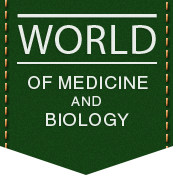| About the author: |
A. F. Levytskyi, Yu. R. Terpylovskyi, O. V. Yaresko |
| Heading |
CLINICAL MEDICINE |
| Type of article |
Scentific article |
| Annotation |
The purpose of the study was to investigate the changes in stress-strain in the forearm bones in diaphyseal fracture of both bones when fixing a fracture of only one bone with titanium elastic nails compared to normal and to determine the type of fixation that best provides conditions for optimal fracture consolidation. We used the finite elements method for numerical analysis of the stress-strain state in the forearm bones. The model was based on tomographic sections of bone. A transverse fracture in the middle of the diaphysis of the ulna and radius was modeled and variants of the model with osteosynthesis with titanium elastic fracture nails of either the ulna only or the radial bone were constructed. The developed biomechanical model “Diaphysis of the forearm bones – metal fixator” demonstrates a moderate increase in internal stress at the fracture site using titanium elastic nails , which can help create optimal conditions for reparative osteogenesis; the greatest changes in the stress-strain state in both types of osteosynthesis in comparison with the norm occurred in the simulation of torsion, especially in the ulna. A significant increase in the stress-strain state in the fracture area of the ulna with its isolated osteosynthesis can lead to complications in the form of delayed union or the formation of a nonunion (even a break of the fixator with the wrong selection of its diameter). Thus, in the case of a fracture of both bones of the forearm, even with a stable fracture of the radial bone, it is not recommended to fix only the ulna. It is better to fix both bones according to standard methods. In addition, in the case of both forearm bones’ fracturing with a stable fracture of the ulna, you can limit osteosynthesis of the radial bone only. |
| Tags |
children, fracture of forearm bones, biomechanics, osteosynthesis, stress-strain state |
| Bibliography |
- Bilinskyi P, Andreichyn V. Kontseptualne modelyuvannya reparatyvnoyi reheneratsiyi pry operatyvnomu likuvanni diafizarnykh perelomiv. Trauma. 2021. 21(1): 31–37. DOI: 10.22141/1608-1706.1.21.2020.197796. [in Ukrainian]
- Levytskyi A, Yaresko O, Terpylovskyi Yu. Zminy napruzheno-deformovanoho stanu kistok peredplichchya pry intramedulyarnomu osteosyntezi diafizarnykh perelomiv. Khirurhiya dytyachoho viku. 2016; 1-2 (50-51): 85–92. [in Ukrainian]
- Blackman AJ, Wall LB, Keeler KA, Schoenecker PL, Luhmann SJ, O'Donnell JC, et al. Acute compartment syndrome after intramedullary nailing of isolated radius and ulna fractures in children. J Pediatr Orthop. 2014. Jan;34(1):50–4. doi: 10.1097/BPO.0b013e31829527de.
- Crighton EA, Huntley JS. Single versus double intramedullary fixation of paediatric both bone forearm fractures: radiological outcomes. Cureus. 2018. Apr 28;10(4):e2544. doi: 10.7759/cureus.2544.
- Du SH, Feng YZ, Huang YX, Guo XS, Xia DD. Comparison of Pediatric Forearm Fracture Fixation Between Single- and Double-Elastic Stable Intramedullary Nailing. Am J Ther. 2016. May-Jun;23(3):730–6. doi: 10.1097/MJT.0000000000000031.
- Elise F. Morgan, Ginu U. Unnikrisnan, AmiraI. Hussein. Bone Mechanical Properties in Healthy and Diseased States. Annu Rev Biomed Eng. 2018; Jun 4; 20: 119–143. doi: 10.1146/annurev-bioeng-062117-121139.
- Gere JM, Goodno BJ. Mechanics of Materials. The Eighth Edition 2012. Cengage Learning. Boston; P. 912.
- Klein-Nulend J, Bacabac RG, Bakker AD. Mechanical loading and how it affects bone cells: the role of the osteocyte cytoskeleton in maintaining our skeleton. Eur Cell Mater. 2012 Sep 24;24:278–91. doi: 10.22203/ecm.v024a20.
- Kruppa C, Bunge P, Schildhauer TA, Dudda M. Low complication rate of elastic stable intramedullary nailing (ESIN) of pediatric forearm fractures: a retrospective study of 202 cases. Medicine (Baltimore). 2017 Apr;96(16):e6669. doi: 10.1097/MD.0000000000006669.
- Papachristou DJ, Georgopoulos S, Giannoudis PV, Panagiotopoulos E. Insights into the cellular and molecular mechanisms that govern the fracture-healing process: a narrative review. J Clin Med. 2021 Aug 12;10(16):3554. doi: 10.3390/jcm10163554.
- Peterlein CD, Modzel T, Hagen L, Ruchholtz S, Krüger A. Long-term results of elastic-stable intramedullary nailing (ESIN) of diaphyseal forearm fractures in children. Medicine (Baltimore). 2019 Mar;98(11):e14743. doi: 10.1097/MD.0000000000014743.
- Prodhomme M, Docquier PL, Miri O, Sans-Merce M, Tabard-Fougère A, Ceroni D, et al. Irradiation level related to intraoperative imaging device in paediatric elastic stable intramedullary nailing: preliminary prospective study on 51 patients using PCXMC software. J Child Orthop. 2020 Oct 1; 14(5):451–458. doi: 10.1302/1863-2548.14.200127.
- Salonen A, Salonen H, Pajulo O. Critical analysis of postoperative complications of antebrachium TEN-nailing in 35 children. Scand J Surg. 2012; 101(3): 216–21.
- Song-in K, Riengrojpitak S, Tiensuwan M. Estimation of stature from forearm length in Thai children. Journal of Food Health and Bioenvironmental Science. 2013; 6(1):131–140.
- Yeo-Hon Yun, Mi-Hyun Song, Dong Jun Kim, Sang-Jin Shin, Jae Kwang Kim. Single bone fixation with flexible intramedullary Nail for displaced both forearm bones, Shaft fractures in children. J Korean Orthop Assoc. 2012 Oct; 47(5):360–367. https://doi.org/10.4055/jkoa.2012.47.5.360.
|
| Publication of the article |
«World of Medicine and Biology» №2(80), 2022 year, 103-108 pages, index UDK 616.717.55/.65-001.5-053.2-089.84:651.465 |
| DOI |
10.26724/2079-8334-2022-2-80-103-108 |
